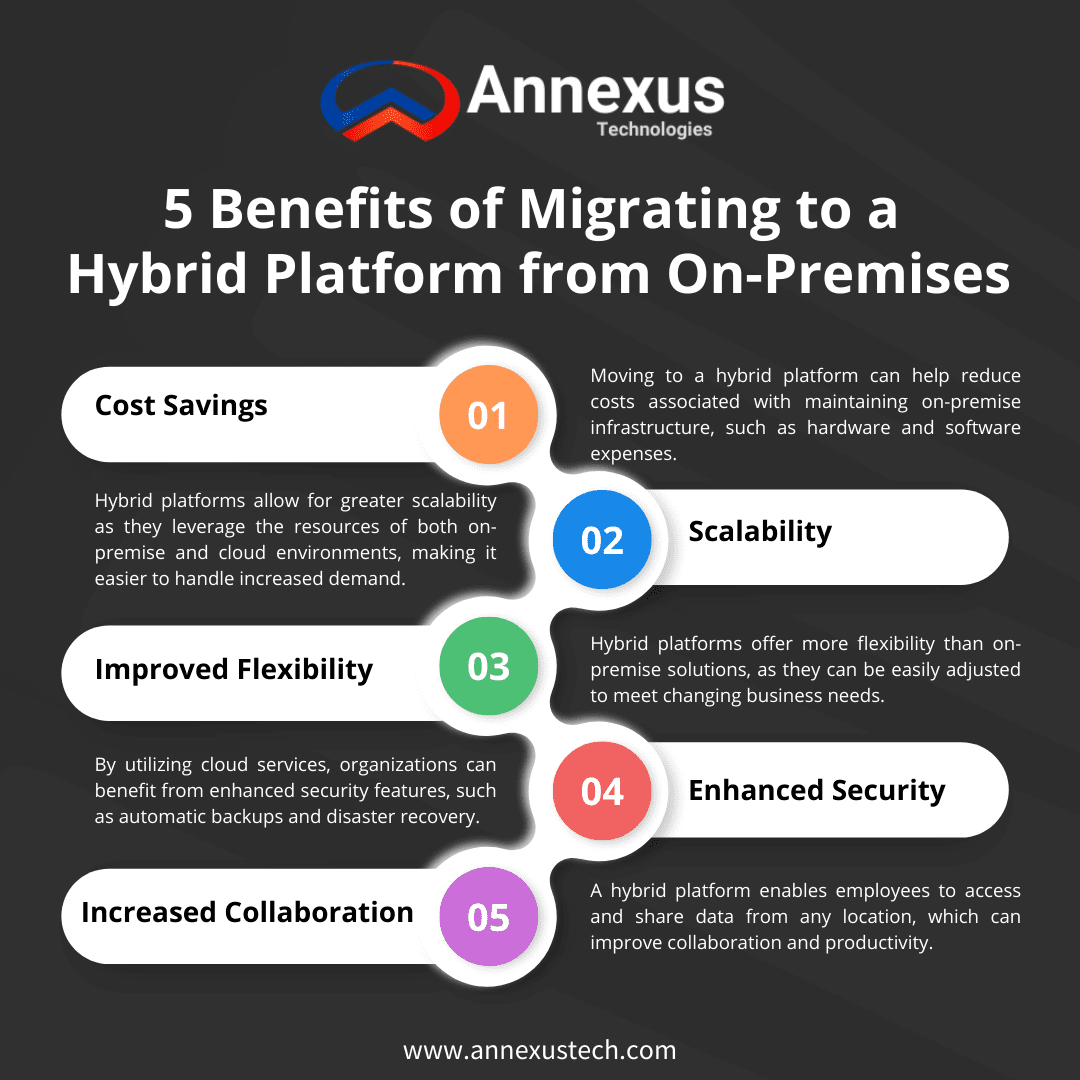In today's fast-paced business environment, organizations are constantly looking for ways to improve their operations and stay competitive. One solution that many companies are turning to is migrating to a hybrid platform. In this article, we will explore the benefits of migrating to a hybrid platform and why it may be the right choice for your organization.

Hybrid vs On-Premise
A Hybrid Platform is a combination of On-Premise and Cloud-based Solutions, allowing for more flexibility in how a company utilizes and manages its technology resources. Some data and applications are stored and run locally on a company's own servers and infrastructure, while others are accessed and managed through cloud-based services.
An on-premise platform, on the other hand, is a solution that is installed and runs entirely on a company's own servers and infrastructure. This means that all data and applications are stored and processed locally, within the company's own network. This can provide more control and security over data and applications, but may require more resources to maintain and manage.
The main difference between a hybrid platform and an on-premise platform is where the infrastructure and data is stored and processed. A hybrid platform allows for a combination of both Cloud and On-Premise Infrastructure, while an On-Premise Platform is limited to only the company's own infrastructure.
Main benefits of migrating to a Hybrid Platform
Migrating to a hybrid platform can bring many benefits to an organization, such as Scalability, Cost-effectiveness, improved Business Continuity Disaster Recovery, and the ability to maintain control over sensitive data. By utilizing the cloud for backups and disaster recovery, organizations can ensure that their data is safe and easily recoverable in the event of an On-Premise Disaster.
By merging On-Premise Solutions and the Cloud; businesses can leverage the best of both worlds without incurring the negative attributes of either. Hence creating an oasis for long-term Business Development, Sustainability, and Continuity.
The main weakness of On-Premise Platforms is the potential data loss and unplanned downtime. On the other hand, the main weakness of the Cloud is accessibility to the Internet and the fact that your data resides on someone else's computer beyond your organization's physical security boundaries. As such, a company's own data can be leveraged against them in the future.
Additionally; the Cloud becomes significantly more expensive when assessed beyond the typical 5-year Contractual Agreement.
Therefore, by merging both Cloud and On-Premise Solutions; an organization is able to have direct access to their data–on their servers–on their premises, while being able to have an encrypted version of the same data stored within the Cloud to extend their resiliency and data recovery abilities.
This approach will ensure unadulterated access to your own data without incurring any additional access and/or bandwidth charges. Furthermore, by encrypting the connection between the On-Premise Solution and the Cloud Solution, then also encrypting the actual data that is stored in the Cloud–an organization is able to extend their IT Security by ensuring their data is protected while at rest and in motion.

Unfortunately, the migration process itself can be complex, it is important to have a well-planned strategy in place, including an assessment of the current On-Premise Infrastructure, a detailed plan for migration, and a thorough testing process to ensure that the new hybrid platform is functioning properly. It is also important to have the right tools and resources in place to manage the new hybrid environment.
Migrating to a hybrid key steps
Migrating from an on-premise to a hybrid platform can be a complex process, but there are several key steps that can help ensure a successful migration. These steps include:
Assessment: The first step in migrating to a Hybrid Platform is to assess your current On-Premise Infrastructure. This includes identifying your current hardware, software, and data, as well as understanding your organization's needs and goals for the migration.
Planning: Once you have a clear understanding of your current infrastructure, you can begin to plan the migration. This includes creating a detailed migration plan that outlines the steps that need to be taken, timelines, and resources required.
Preparation: Before starting the migration, it is important to prepare your environment. This includes testing your current infrastructure, making sure you have the necessary resources in place, and identifying any potential issues that may arise during the migration.
Execution: With the Migration Plan in place and the environment prepared, you can begin the actual migration process. This includes moving your data and applications to the cloud, configuring your new hybrid environment, and testing the new system to ensure that it is functioning properly.
Monitoring and Management: After the migration is complete, it is important to monitor and manage your new hybrid environment. This includes monitoring the performance of your new system, addressing any issues that may arise, and making sure that all security and compliance requirements are met.
Optimization: After your migration is completed and your hybrid environment is up and running, it is important to optimize your system to ensure that it is meeting your organization's needs and goals. This includes monitoring performance, identifying areas for improvement, and making changes as necessary.
It is important to note that the migration process can take time and requires a well-planned strategy, the right tools and resources, and a dedicated team to manage and monitor the migration process. With the right approach and the right team, you can successfully migrate to a hybrid platform and take advantage of the many benefits it offers.
If you are considering migrating to a hybrid platform, choose Annexus Technologies. With our strategic partners: Zerto, VMware, Pure Storage, Palo Alto Networks, Cisco, and IBM; we have all the tools to make your migration fast and efficient. Contact us today to discuss how we can help your organization take advantage of the benefits of a hybrid platform.
